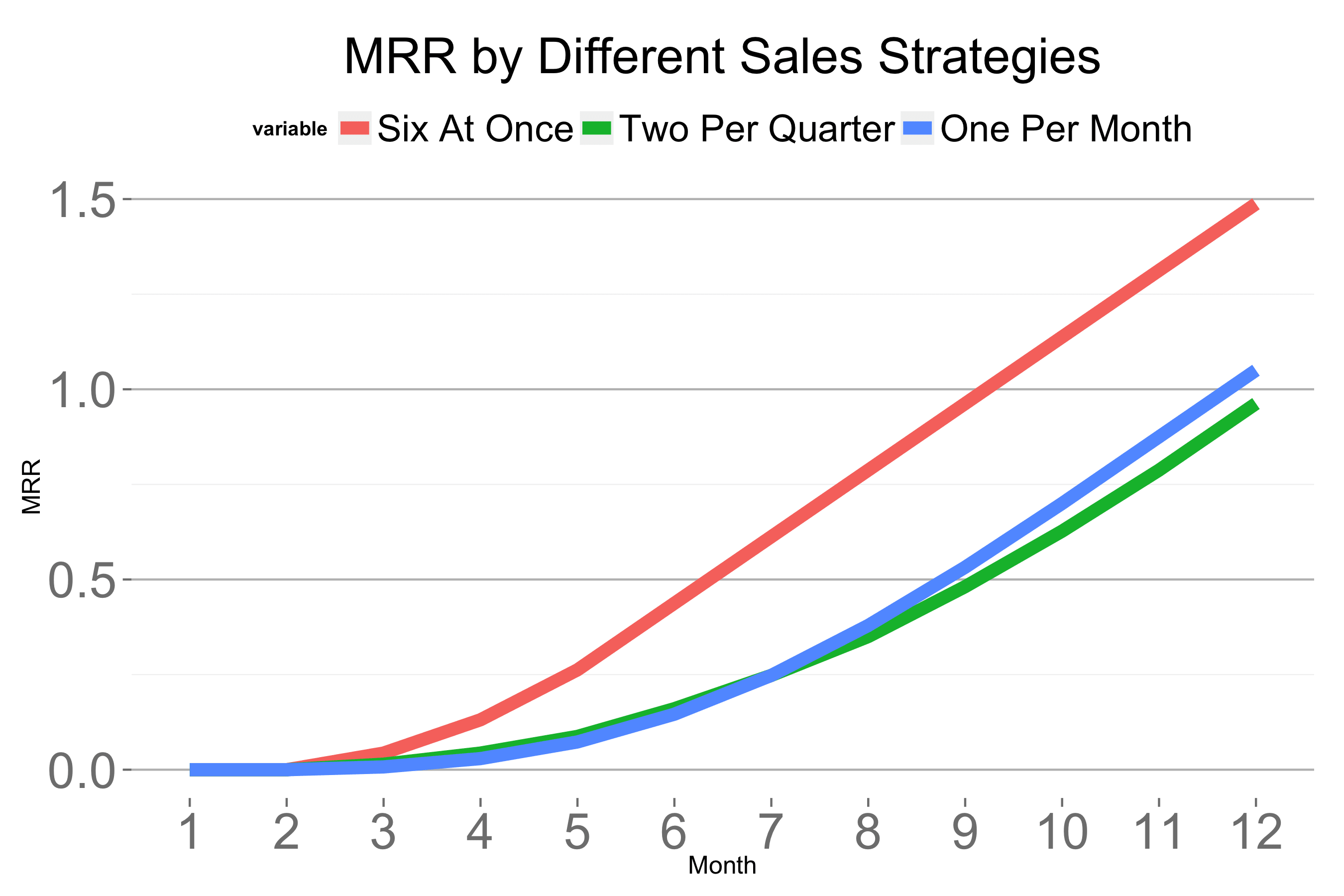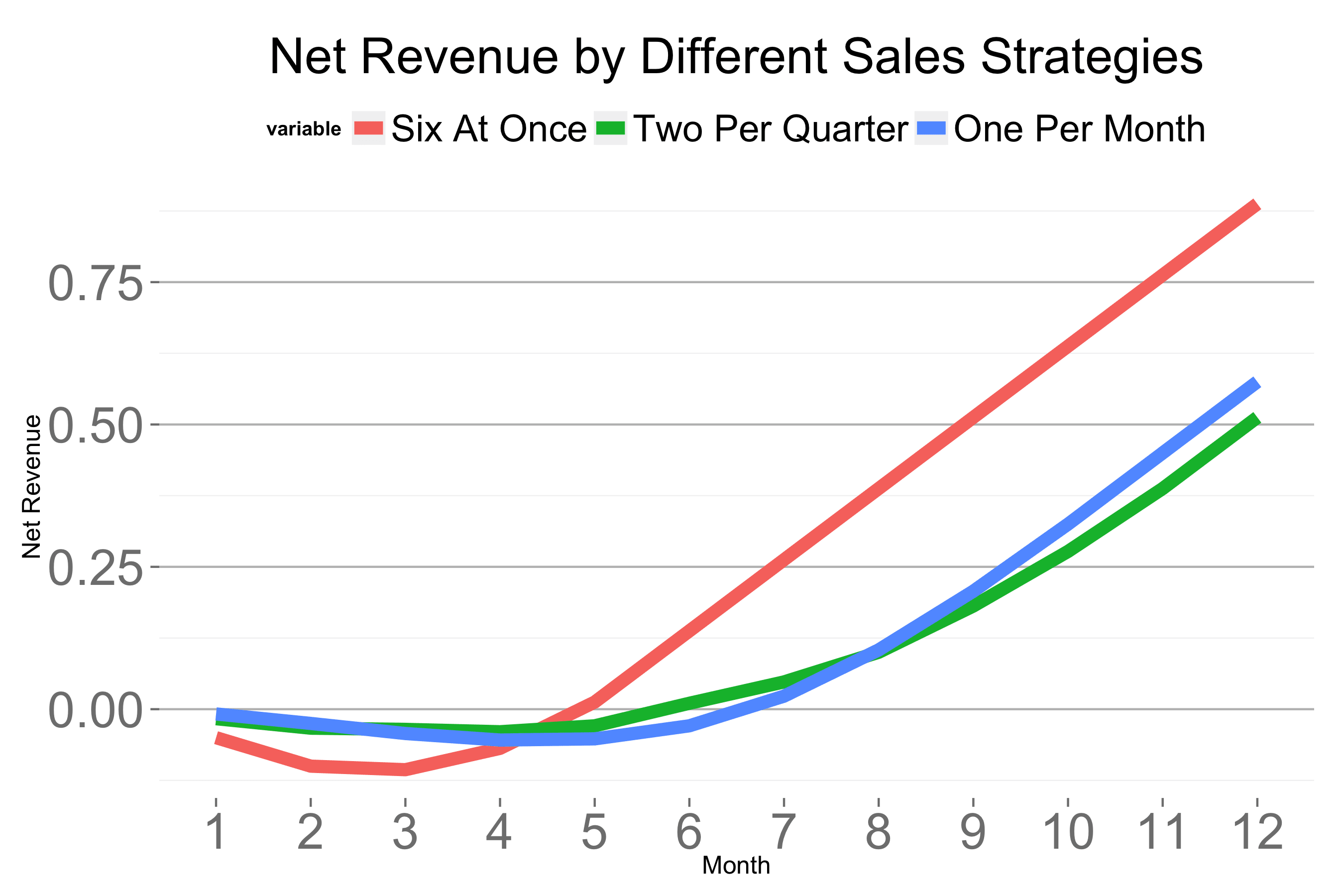What are the tradeoffs when considering different sales hiring plans and which is the right one for your startup? There are many different considerations in creating a sales hiring plan. Balancing them all can be tricky, but thinking through the trade-offs is important to scaling the business well.
First, let’s compare the financial impact of three different sales hiring strategies: six sales people hired at once, two sales people hired for each of three quarters and one sales person hired each month. In this hypothetical example, the sales people have a $350k annual quota, cost the startup $100k annually, and achieve their quota over six months with the following attainment percentages by month: 0%, 0%, 25%, 50%, 75%, 100%.
The plot at the top of the post compares the MRR trajectory of these three sales strategies. No surprise that hiring the six sales people immediately grows the top line of the business faster. aAfter about the 8th month, all sales strategies reach the same constant growth rate created by six sales people achieving quota.
Next, let’s look at the cash implications of each strategy. The chart below shows the net revenue, so the total revenue minus costs of the sales people’s salaries. The Six At Once strategy is 3-4x more cash intensive at the beginning but the net revenue breaks zero one to two months before the other two strategies.
In short, the Six At Once strategy values growth over cash and on the other extreme, the Two Per Quarter values slow and steady progress.
These two simple models overlook some very important considerations when crafting a sales hiring strategy. Namely:
- Not every sales hire will be successful. It’s common to see sales attrition rates of 25%-50% annually. With employee turnover at those levels, the negative cash impact of strategies like the six at once can be much larger and ultimately delay the revenue ramp for several months. This is important to model if only to understand the impact on the company’s burn rate.
- Not all startups building sales teams have built turn-key sales processes in which the customer is identified, the sales process is mechanized, the infrastructure to create, sign and close contracts is in place, and incentive structures are relatively well-crafted. In fact, most won’t have, so hiring large teams out-of-the-gate may lead to significant under-attainment of quota because of questions and uncertainty around the sales process. Sales materials may not be developed. Qualified lead flow may not be systematically generated. Customer objections may not be well understood and handled. Sales training efforts may not yet be mature enough to support large growth in the sales team.
- The company needs the right sales management in place to be able to handle a Six at Once strategy, whereas more incremental strategies are much more natural for small product or engineering centric teams to digest. The addition of a sales team to a product-focused company will also alter and ultimately enrich the culture, but the company may need some time to adjust.
Understanding the impact of a sales hiring plan on a startup’s business is important both for good financial management of the company, but also to ensure the company is able to meet its revenue targets. Because the sales team imposes demands on the marketing organization for leads and the engineering organization for product delivery and the finance organization for contracts and quotas, growth in the sales organization will cascade into other teams as well. But this simple framework is a good way to get started understanding the impact a sales hiring plan might have on a startup.

